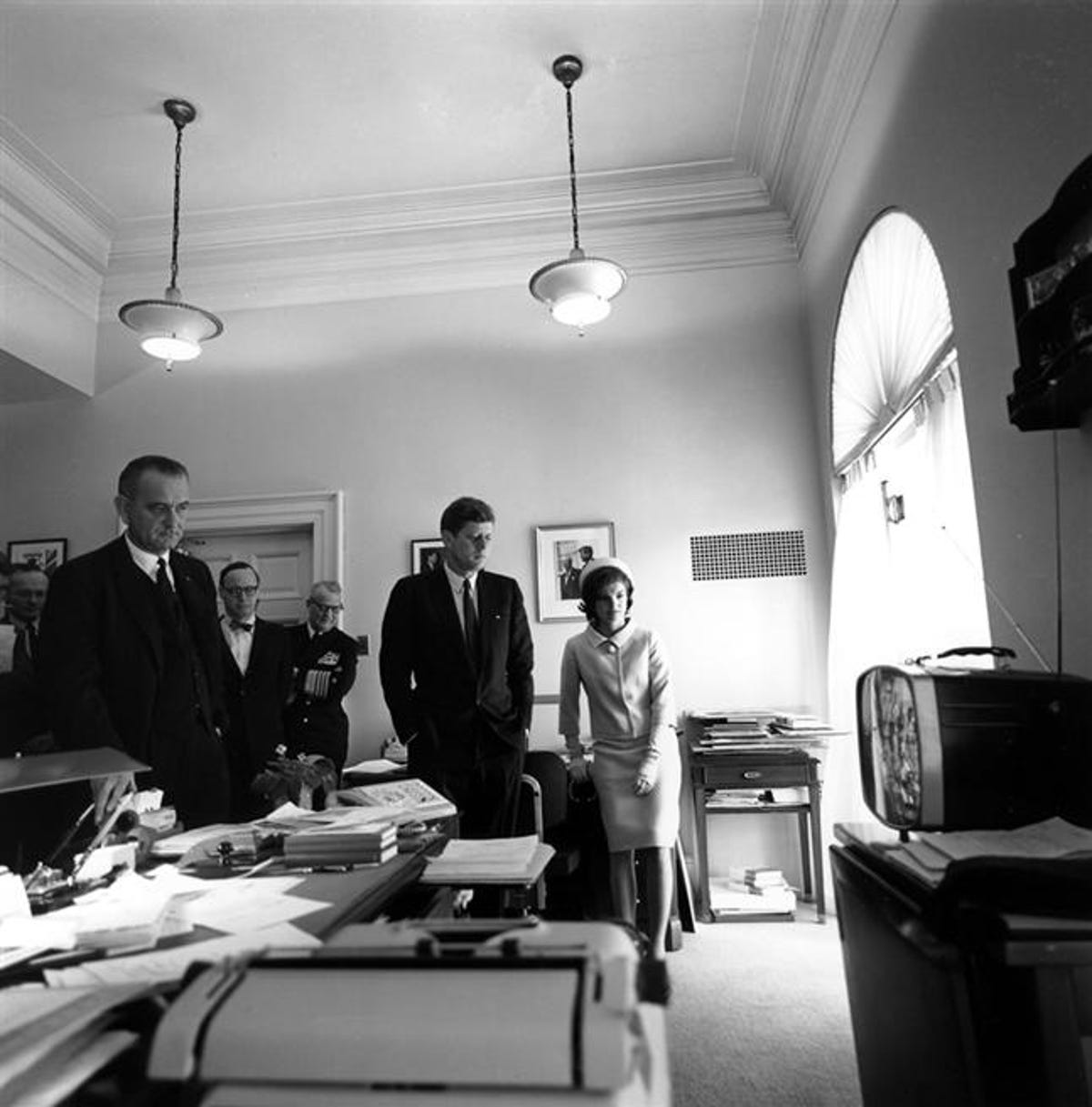Photos: The Apollo 11 moon landing
In July 1969, at the height of the Space Race, Neil Armstrong and Buzz Aldrin became the first humans to set foot on another heavenly body.

Kennedy's mandate
This photo, from earlier that May, shows Kennedy (center, foreground) watching a television broadcast of a space flight by astronaut Alan Shepard, accompanied by others including Vice President Lyndon Johnson (left, foreground) and First Lady Jacqueline Kennedy (right).
Apollo 11 crew
Command module
Neil Armstrong in training
En route to the launch pad
Liftoff from afar
Liftoff from the tower
Buzz Aldrin in landing module
Making a sandwich
LM in flight, with Earth rise
"When we launched the other day the Moon was nowhere near where it is now; it was some 40 degrees of arc, or nearly 200,000 miles, behind where it is now, and yet those big computers in the basement in Houston [at NASA's Mission Control] didn't even whimper but belched out super-accurate predictions....
"The accuracy of the overall system is phenomenal: out of a total of nearly 3,000 feet per second, we have velocity errors in our body axis coordinate system of only a tenth of 1 foot per second in each of the three directions."
This image shows the Eagle lunar lander on July 21 making its docking approach to the Columbia after leaving the moon's surface. The dark section of the surface is Smyth's Sea, and the object in the background, of course, is Earth.
Armstrong's small step
Armstrong stepped off the LM a little more than six hours later, at 10:56 p.m. EDT, uttering his famous line: "That's one small step for a man, one giant leap for mankind."
(According to NASA, the black bar running through the TV picture is an anomaly in the television ground data system at the Goldstone Tracking Station.)
Aldrin exits LM
Aldrin steps onto the moon
Boot and footprint
Gear on the moon
The space suit
"My Earth weight, with the big backpack and heavy suit, was 360 pounds. On the moon, I weighed only 60 pounds."
The flag
Aldrin: "A small telescoping arm was attached to the flagpole to keep the flag extended and perpendicular. As hard as we tried, the telescope wouldn't fully extend. Thus the flag, which should have been flat, had its own unique permanent wave."

